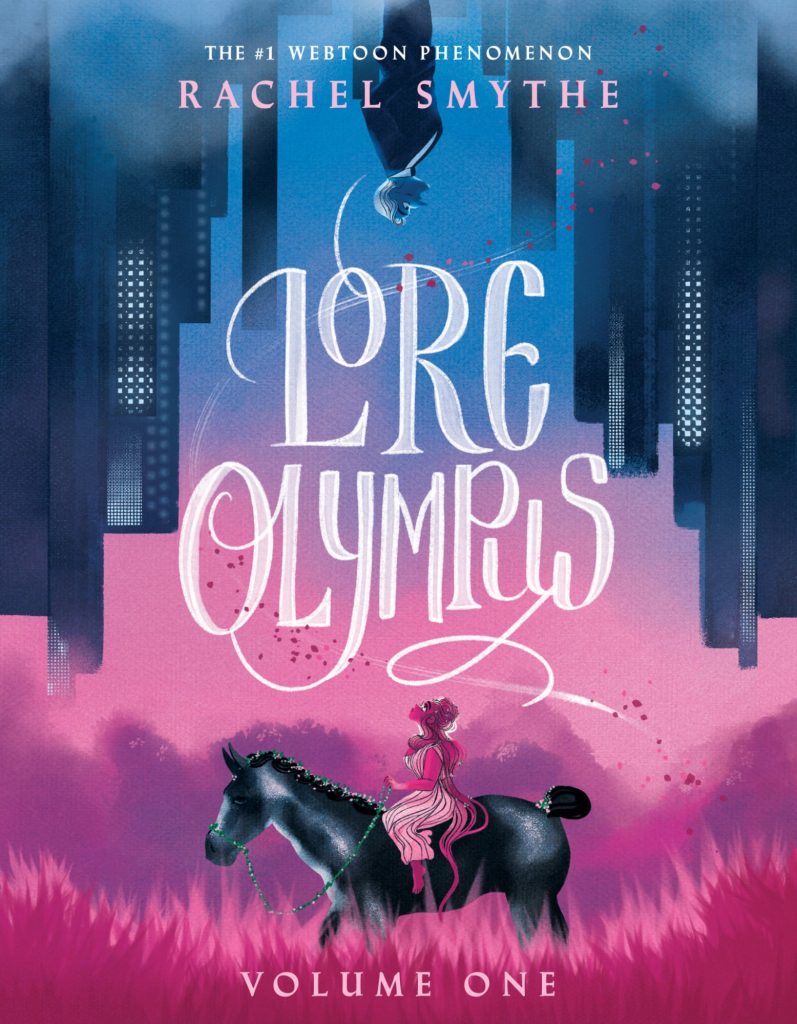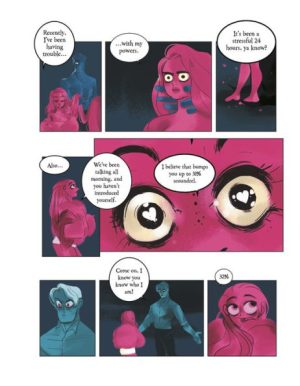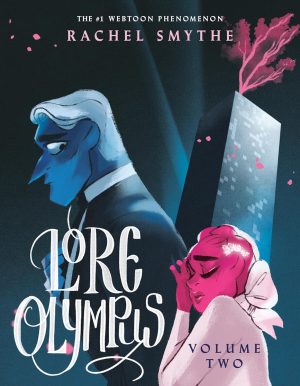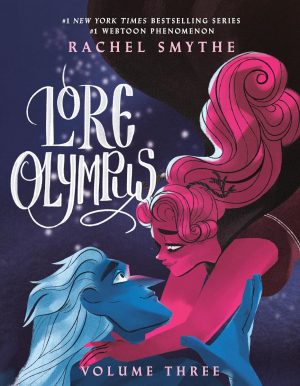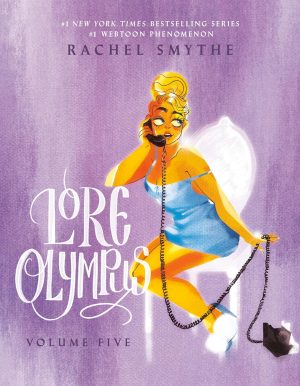Review by Frank Plowright
The ancient Greek/Roman gods still exist, still watch over us, and the fractured dynamics of the original broken family still apply. They’re the same back-stabbing, petty-minded, self-centred individuals they ever were. That’s the premise for Rachel Smythe’s extraordinarily successful Lore Olympus series as originally serialised online. As of writing it’s won three consecutive Eisner Awards for Best Webcomic, to match three consecutive Harvey Awards between 2021 and 2023.
Persephone is Demeter’s daughter, and has been kept hidden away from the other gods in the mortal world so she comes to no harm, which is a statement far more loaded than it seems. She’s unknown to the other gods until she accompanies Artemis to a party and Hades, notoriously unable to buy a date, is instantly smitten. In revenge for past slights, Persephone is drugged and left in Hades’ car in order to embarrass him, but that’s not what happens.
By applying a modern touch to characters we all vaguely know, Smythe has the beginnings of a winning formula, which is then greatly enhanced by rich cartooning with particular attention to emotional responses, colour coding the assorted gods and witty lines of situational dialogue. The result is captivating.
Having introduced Persephone and Hades well enough for readers to know the truth of them, Smythe then broadens the cast. She modernises the myth of Eros and Psyche, and has a sly line in infusing the story with other allegories to the present day, such as the value of personal information. Whether as Hades or Pluto, the god of the underworld is never normally treated as a sympathetic character, but here stands in for anyone infatuated, and it’s sweet. Persephone, on the other hand, having led such a sheltered life, rapidly finds herself subject to the attention of other men. Innocence has been her protection for most of the story, but an unpleasant turn is taken toward the end.
Although a bulky book, Lore Olympus is actually a relatively quick reading experience due to its Webtoons origins. Panels designed to be scrolled on a phone are rejigged to occupy pages, in effect transferring one form of storytelling to another, and the because the original format is artistically limiting there’s some credit due for panel placement making the printed version a different, but equally compelling experience.
The winning drama and deftly created personalities mean it’s unlikely anyone reading through Volume One won’t want to head straight for Volume Two, or the first three hardcovers are available combined in a slipcased box set.
